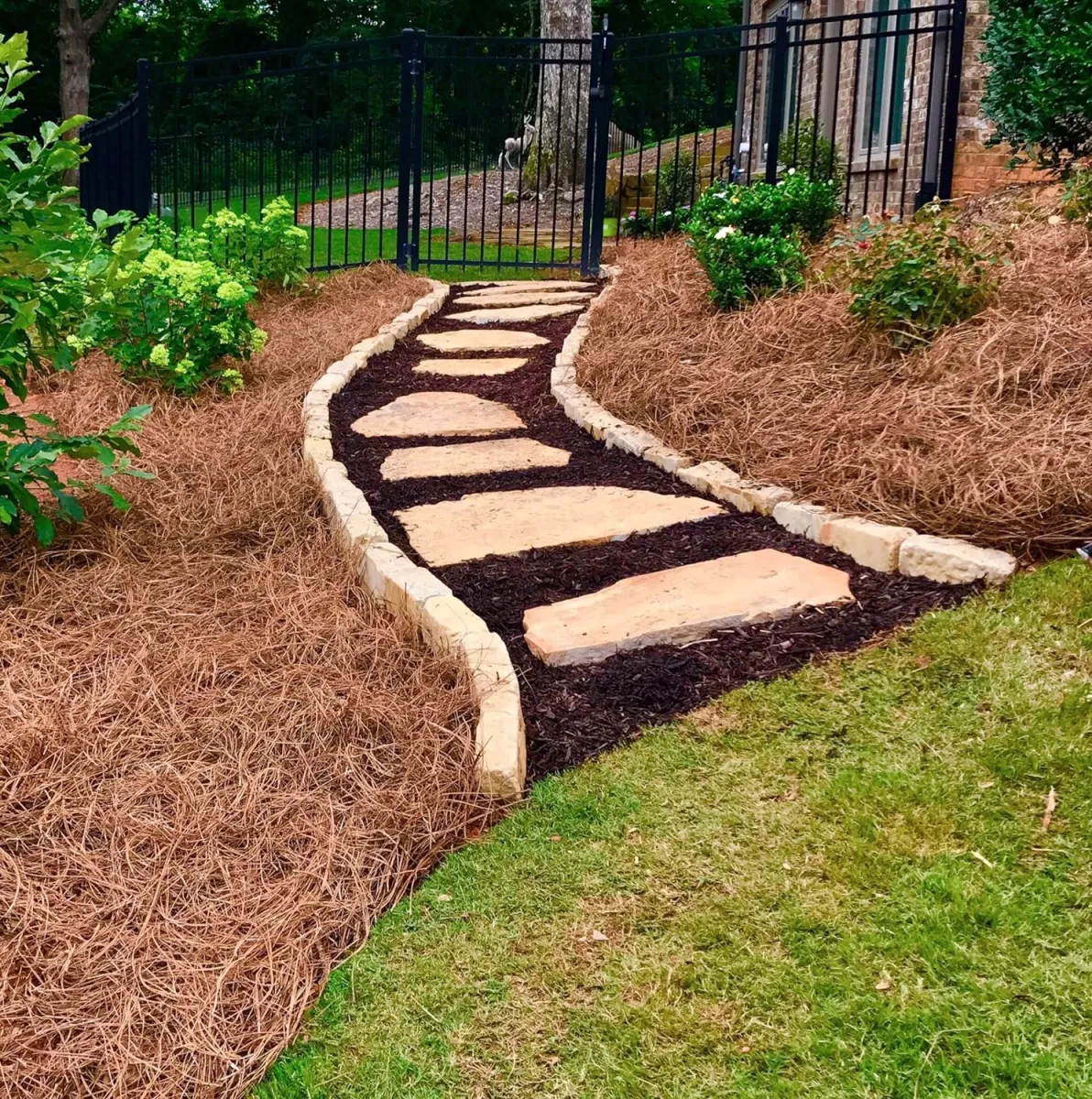In various parts of the country, choosing between mulching with pine needles or wood mulch can be challenging. Since the 1980s, pine straw has been particularly popular in the South due to its affordability, effectiveness, and attractiveness, especially in areas where loblolly and longleaf pines are prevalent.
Like most mulches, pine needles provide valuable organic matter to the soil, supporting a wide range of native and ornamental plants, including trees, shrubs, perennials, and annuals. If you’re considering pine straw for your landscaping needs, here are some key points to keep in mind:
1. Pine Straw Mulch is Lighter Than Wood Mulch
When planning your spring landscape cleanup, mulch weight might not be your first concern. However, after lifting, transporting, and spreading several bags, your arms and back might start to feel the strain. Wood mulch is surprisingly heavy, whereas pine straw is much lighter.
To compare their coverage, consider that a single bale of pine straw, weighing about 35 pounds, covers roughly 50 square feet. In contrast, a standard 2-cubic-foot bag of wood mulch weighs about 25 pounds and covers only 12 square feet. This means that pine straw covers about 1.5 square feet per pound, while wood mulch covers just 0.5 square feet per pound, offering three times the coverage per pound.
2. Long-Leaf Pine Straw is Preferred by Many Gardeners
When visiting a garden center, you may encounter two types of pine needles: long-needle pine straw from the longleaf pine, which is 12 to 18 inches long, and short-needle straw from loblolly or slash pines, which is 4 to 8 inches long. Long-needle straw is thicker, coarser, and decomposes more slowly than its short-needle counterpart. Many gardeners find the reddish hue of long pine needles appealing, while short needle straw tends to be a light brown color.
3. Pine Straw Mulch Can Be Sustainable
Pine straw sold in stores and landscaping centers is typically harvested from managed timber farms. These farms are privately owned and managed with various environmental goals, making the sustainability of pine straw harvesting complex and varied. Homeowners with loblolly or longleaf pines can recycle fallen needles as mulch, saving money and reducing waste. This approach also helps keep lawns, driveways, and decks clear while enhancing and protecting garden beds.
4. Pine Straw Mulch is More Cost-Effective
When comparing the cost of pine straw to wood mulch, pine straw offers significantly better value. Wood mulch typically costs about $10 for three 2-cubic-foot bags, covering a total of 36 square feet, or about 3.6 square feet per dollar. In contrast, a $4 bale of pine straw covers approximately 50 square feet, equating to about 12.5 square feet per dollar. This means that pine straw can stretch your dollar nearly 3.5 times further than wood mulch.
5. Pine Straw is an Excellent Insulator
Pine straw mulch helps conserve moisture, prevent erosion, block weeds, and regulate soil temperature. Its loose structure traps air, providing insulation that protects soil from rapid temperature fluctuations. This means that soil beneath pine straw remains warmer in winter and cooler in summer, safeguarding plant roots from extreme temperature changes.
6. Pine Needles Maintain Soil Moisture Well
The insulating properties of pine straw mulch also help retain soil moisture. The mulch’s structure allows water to penetrate the soil while reducing evaporation. This results in healthier soil with better moisture retention, promoting deeper root systems for plants. Pine straw’s cooling effect also helps minimize moisture loss due to evaporation.
7. Pine Straw Mulch Should Be Spread 3 Inches Deep
When spreading pine straw mulch, it’s best to wear gardening gloves, as the needles can be prickly. Start by cutting the string or wire holding the bales together. Pull apart the compressed layers and shake the mulch across your garden beds. Use your hands or a bow rake to spread the mulch to a depth of about 3 inches across the soil.
8. Pine Needle Mulch Can Last Up to a Year
Depending on environmental factors, pine needle mulch can last from 6 months to a year before needing a fresh layer. Factors such as climate, erosion, and aesthetic preferences will determine how often you need to reapply. When adding new mulch, don’t remove the old layer; allow it to decompose naturally, enriching the soil.
9. Pine Straw Mulch Isn’t the Best for Weed Prevention
While pine straw excels at maintaining soil temperature, structure, and moisture, it is less effective at preventing weed growth compared to other mulches. Pine straw allows light and moisture to penetrate the soil, which can encourage weed seeds to germinate. Additionally, it can provide a hospitable environment for unwanted plants like Virginia creeper, Bermuda grass, and poison ivy to spread.
Overall, pine straw is a versatile, cost-effective, and attractive mulch option that supports a healthy landscape, though it may require additional weed management.




